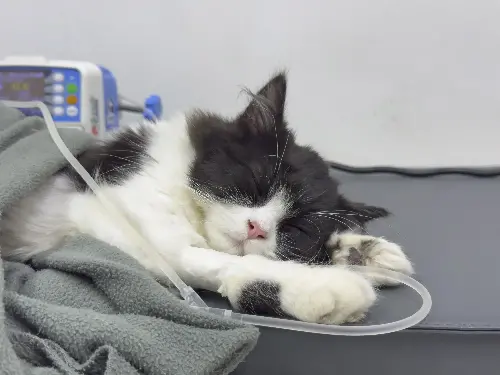
Cat owners should take proactive measures to protect their pets from bird flu infections as reports of cases in both domestic and wild cats rise—many of which have proved fatal.
This is the warning of Dr. Susan Nelson, a veterinarian and Kansas State University professor.
"Vigilance is key in preventing further infections," she said in a statement issued on February 4, adding that there was no need to panic in the current situation.
"We must report any signs of disease in our cats, local wildlife or birds and take the proper precautions to reduce the risk of spread," Nelson continued.
Outbreaks of H5N1 bird flu, a highly pathogenic avian influenza, have been growing in both wild and farmed bird populations in the past few years.
As the disease appears in more mammals—such as sea lions in South America and minks in Europe and China—experts fear that the virus is adapting to better infect this class, which also includes humans.
At the moment, human infections remain rare. To date, the U.S. Centers for Disease Control and Prevention has recorded 67 human cases of bird flu, with one death resulting from the virus.
What Are the Symptoms of Bird Flu in Cats?
According to Nelson, cats infected with bird flu commonly display severe respiratory symptoms—including coughing, eye and nasal discharge, fever, labored breathing, and a loss of appetite.
Veterinarians have also reported observing accompanying neurological signs, such as blindness, seizures and tremors.
"Symptoms of H5N1 can sometimes mimic rabies, making prompt veterinary assessment critical," Nelson said.
Cat owners whose pets are sick and may have been exposed to bird flu should contact their veterinarians immediately.
"It is important to call ahead before bringing your cat in. While no cat-to-human transmission has been reported, precautionary measures need to be taken to protect staff and other patients," Nelson said.
She also recommended limiting exposure between the sick animal and other pets and people in the house. Those handling cats with suspected bird flu should wear a mask and gloves, she added.
How Can Cats Catch Bird Flu?
According to the American Veterinary Medical Association, a main source of bird flu infection in domestic cats is via the food and drink they consume.
"There have been several reports of cats becoming infected from consuming raw poultry or unpasteurized milk," Nelson said.
"Other possible exposure routes include contact with infected birds, livestock or contaminated surfaces, as well as interaction with humans who have worked on affected farms," she continued.
How to Protect Your Cat From Bird Flu
Given the above, cat owners should not feed their pets raw meat—especially poultry—or unpasteurized dairy products, veterinarians advised.
Cats should be kept indoors and away from potentially infected birds, livestock and wildlife, especially in areas with known bird flu outbreaks.
Owners should ensure that their felines' rabies vaccinations are up to date to avoid the risk of confusion between the two viral infections.
Finally, pet owners should avoid handling dead birds where possible—and if essential, wear personal protective equipment, including gloves and a mask, when doing so. If coming into contact with livestock or poultry, owners should change their clothes and wash their hands thoroughly before interacting again with their cats.
Do you have a tip on a health story that Newsweek should be covering? Do you have a question about bird flu? Let us know via [email protected].
Related Articles
- New York City Shuts Down All Live Poultry Markets After Bird Flu Detected
- Why Are Eggs So Expensive and When Will Prices Come Down?
- Can You Get Bird Flu From Drinking Milk? What to Know as Cows Are Infected
- Bird Flu Infects Cows For Second Time in Under a Year
